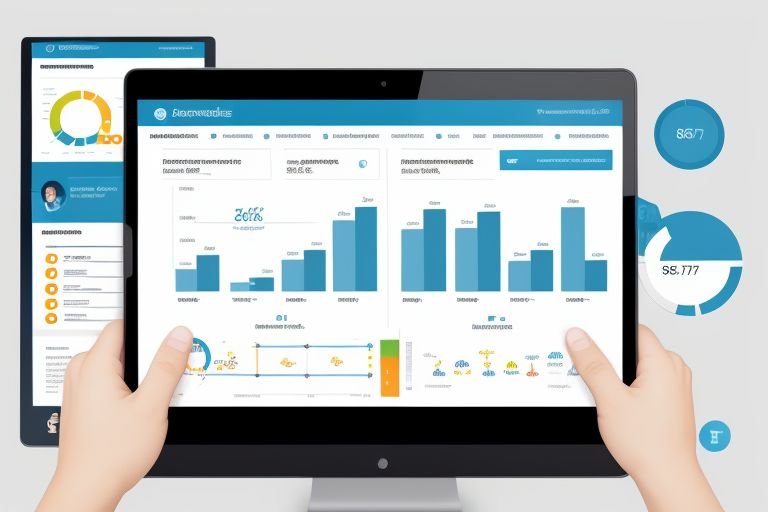User-centric Design: Innovative Features Enhancing Tech Gadgets

In an era where technology pervades every aspect of our lives, the concept of user-centric design has emerged as a cornerstone in the development of tech gadgets. This design philosophy prioritizes the needs, preferences, and experiences of users, ensuring that technology is not only functional but also intuitive and enjoyable. This article explores the innovative features that define user-centric design in modern tech gadgets, highlighting how they enhance usability, accessibility, and overall user satisfaction.
Key Takeaways
- User-centric design focuses on the needs and experiences of users, leading to more intuitive and enjoyable tech gadgets.
- Innovative features such as personalization, smart automation, and enhanced accessibility are essential in modern gadget design.
- The integration of sustainability practices resonates with environmentally conscious consumers, promoting ethical technology use.
- Community feedback is vital for ensuring that tech products meet real user needs and preferences.
Understanding User-Centric Design
User-centric design, often referred to as human-centered design, is an approach that places the user at the center of the design process. This methodology involves understanding user needs through research, prototyping, and iterative testing. By engaging users directly, designers can create products that address real-world problems and improve user experiences. Key principles include:
- Empathy: Understanding users’ emotions, motivations, and challenges.
- Usability: Ensuring that products are easy to use and navigate.
- Accessibility: Designing for inclusivity, making sure products can be used by individuals with varying abilities.
Innovative Features in Tech Gadgets
1. Intuitive Interfaces
Modern gadgets often incorporate touchscreens, voice recognition, and gesture controls, making interaction seamless. For example, smart home devices like Google Nest and Amazon Echo respond to voice commands, allowing users to control their environments effortlessly. This hands-free capability significantly enhances usability, especially for individuals with mobility challenges.
2. Personalization
Tech gadgets are increasingly featuring personalization options that allow users to tailor their devices according to their preferences. For instance, smartphones now offer customizable home screens, app layouts, and notification settings. Wearable devices, like fitness trackers, can adapt to users’ health goals and provide personalized feedback, fostering a deeper connection between users and their devices.
3. Smart Automation

Automation features enhance user convenience by allowing devices to learn from user behavior and preferences. For example, smart thermostats can adjust temperatures based on a user’s schedule and habits, optimizing energy usage while providing comfort. This proactive approach not only improves user experience but also promotes sustainability.
4. Enhanced Accessibility Features
Recognizing the diverse needs of users, tech companies are integrating accessibility features into their products. Features such as screen readers, adjustable text sizes, and high-contrast modes help individuals with visual impairments engage with technology. Furthermore, haptic feedback and customizable controls in smartphones and tablets cater to users with hearing impairments, ensuring inclusivity in the digital age.
5. Sustainability and Ethical Design

User-centric design extends beyond functionality and aesthetics to encompass sustainability. Many consumers are increasingly concerned about the environmental impact of their gadgets. Brands that prioritize eco-friendly materials, energy efficiency, and recyclability are resonating with environmentally conscious users. For instance, companies like Fairphone focus on creating modular smartphones that are easy to repair, promoting longevity and reducing electronic waste.
6. Community Feedback Integration
Modern tech companies are leveraging community feedback to inform their design processes. Platforms such as beta testing groups allow users to provide input on new features before they are officially launched. This not only fosters a sense of community among users but also ensures that the final product resonates with their needs.
Also Read: How Tech Specifications Influence Gadget Performance
Conclusion
User-centric design is revolutionizing the tech industry by fostering innovation that prioritizes the user experience. As gadgets become more integrated into our daily lives, the emphasis on intuitive interfaces, personalization, automation, accessibility, sustainability, and community feedback will continue to shape the future of technology. By adopting a user-first approach, designers and companies can create products that not only meet the demands of today’s consumers but also enhance their overall quality of life.
FAQs
1. What is user-centric design?
User-centric design is a design philosophy that prioritizes the needs, preferences, and experiences of users throughout the design process, ensuring that products are functional, intuitive, and enjoyable to use.
2. How does user-centric design enhance tech gadgets?
It enhances tech gadgets by incorporating intuitive interfaces, personalization options, smart automation, accessibility features, sustainability practices, and community feedback, all of which contribute to improved usability and user satisfaction.
3. Why is accessibility important in tech gadget design?
Accessibility ensures that all individuals, regardless of their abilities, can use and benefit from technology. It promotes inclusivity and provides equal access to information and tools.
4. How can consumers advocate for user-centric design?
Consumers can advocate for user-centric design by providing feedback to companies, participating in beta testing programs, and choosing brands that prioritize user experience and sustainability.
5. What are some examples of user-centric features in tech gadgets?
Examples include voice recognition in smart home devices, customizable settings in smartphones, and energy-efficient features in smart appliances.




